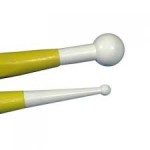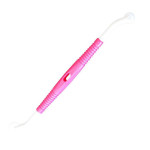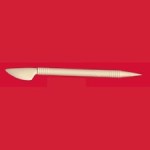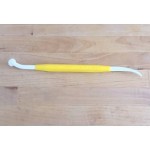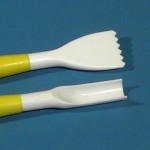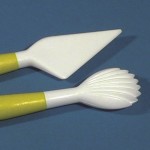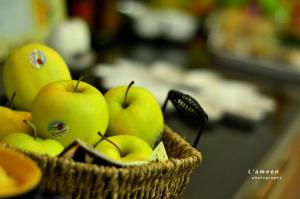Fish and shellfish are very keto-friendly foods. Salmon and other fish are rich in B vitamins, potassium and selenium, yet virtually carb-free .
However, the carbs in different types of shellfish vary. For instance, while shrimp and most crabs contain no carbs, other types of shellfish do .
While these shellfish can still be included on a ketogenic diet, it’s important to account for these carbs when you’re trying to stay within a narrow range.
Here are the carb counts for 3.5-ounce (100-gram) servings of some popular types of shellfish :
- Clams: 5 grams
- Mussels: 7 grams
- Octopus: 4 grams
- Oysters: 4 grams
- Squid: 3 grams
Salmon, sardines, mackerel and other fatty fish are very high in omega-3 fats, which have been found to lower insulin levels and increase insulin sensitivity in overweight and obese people .
In addition, frequent fish intake has been linked to a decreased risk of disease and improved mental health.
Aim to consume at least two servings of seafood weekly.
Non-starchy vegetables are low in calories and carbs, but high in many nutrients, including vitamin C and several minerals.
Vegetables and other plants contain fiber, which your body doesn’t digest and absorb like other carbs.
Therefore, look at their digestible (or net) carb count, which is total carbs minus fiber.
Most vegetables contain very few net carbs. However, consuming one serving of “starchy” vegetables like potatoes, yams or beets could put you over your entire carb limit for the day.
The net carb count for non-starchy vegetables ranges from less than 1 gram for 1 cup of raw spinach to 8 grams for 1 cup of cooked Brussels sprouts .
Vegetables also contain antioxidants that help protect against free radicals, which are unstable molecules that can cause cell damage .
What’s more, cruciferous vegetables like kale, broccoli and cauliflower have been linked to decreased cancer and heart disease risk.
Low-carb veggies make great substitutes for higher-carb foods. For instance, cauliflower can be used to mimic rice or mashed potatoes, “zoodles” can be created from zucchini and spaghetti squash is a natural substitute for spaghetti.
Cheese is both nutritious and delicious.
There are hundreds of types of cheese. Fortunately, all of them are very low in carbs and high in fat, which makes them a great fit for a ketogenic diet.
One ounce (28 grams) of cheddar cheese provides 1 gram of carbs, 7 grams of protein and 20% of the RDI for calcium.
Cheese is high in saturated fat, but it hasn’t been shown to increase the risk of heart disease. In fact, some studies suggest that cheese may help protect against heart disease.
Cheese also contains conjugated linoleic acid, which is a fat that has been linked to fat loss and improvements in body composition (23).
In addition, eating cheese regularly may help reduce the loss of muscle mass and strength that occurs with aging.
A 12-week study in older adults found that those who consumed 7 ounces (210 grams) of ricotta cheese per day experienced increases in muscle mass and muscle strength over the course of the study.
Avocados are incredibly healthy.
3.5 ounces (100 grams), or about one-half of a medium avocado, contain 9 grams of carbs.
However, 7 of these are fiber, so its net carb count is only 2 grams.
Avocados are high in several vitamins and minerals, including potassium, an important mineral many people may not get enough of. What’s more, a higher potassium intake may help make the transition to a ketogenic diet easier.
In addition, avocados may help improve cholesterol and triglyceride levels.
In one study, when people consumed a diet high in avocados, they experienced a 22% decrease in “bad” LDL cholesterol and triglycerides and an 11% increase in “good” HDL cholesterol
Meat and poultry are considered staple foods on a ketogenic diet.
Fresh meat and poultry contain no carbs and are rich in B vitamins and several minerals, including potassium, selenium and zinc .
They’re also a great source of high-quality protein, which has been shown to help preserve muscle mass during a very low-carb diet .
One study in older women found that consuming a diet high in fatty meat led to HDL cholesterol levels that were 8% higher than on a low-fat, high-carb diet .
It’s best to choose grass-fed meat, if possible. That’s because animals that eat grass produce meat with higher amounts of omega-3 fats, conjugated linoleic acid and antioxidants than meat from grain-fed animals .
6. Eggs
Eggs are one of the healthiest and most versatile foods on the planet.
One large egg contains less than 1 gram of carbs and fewer than 6 grams of protein, making eggs an ideal food for a ketogenic lifestyle .
In addition, eggs have been shown to trigger hormones that increase feelings of fullness and keep blood sugar levels stable, leading to lower calorie intakes for up to 24 hours.
It’s important to eat the entire egg, as most of an egg’s nutrients are found in the yolk. This includes the antioxidants lutein and zeaxanthin, which help protect eye health .
Although egg yolks are high in cholesterol, consuming them doesn’t raise blood cholesterol levels in most people. In fact, eggs appear to modify the shape of LDL in a way that reduces the risk of heart disease .
Coconut oil has unique properties that make it well suited for a ketogenic diet.
To begin with, it contains medium-chain triglycerides (MCTs). Unlike long-chain fats, MCTs are taken up directly by the liver and converted into ketones or used as a rapid source of energy.
In fact, coconut oil has been used to increase ketone levels in people with Alzheimer’s disease and other disorders of the brain and nervous system (38).
The main fatty acid in coconut oil is lauric acid, a slightly longer-chain fat. It has been suggested that coconut oil’s mix of MCTs and lauric acid may promote a sustained level of ketosis .
What’s more, coconut oil may help obese adults lose weight and belly fat. In one study, men who ate 2 tablespoons (30 ml) of coconut oil per day lost 1 inch (2.5 cm), on average, from their waistlines without making any other dietary changes .
For more information about how to add coconut oil to your diet, read this article.
Plain Greek yogurt and cottage cheese are healthy, high-protein foods.
While they contain some carbs, they can still be included in a ketogenic lifestyle.
5 ounces (150 grams) of plain Greek yogurt provides 5 grams of carbs and 11 grams of protein. That amount of cottage cheese provides 5 grams of carbs and 18 grams of protein .
Both yogurt and cottage cheese have been shown to help decrease appetite and promote feelings of fullness .
Either one makes a tasty snack on its own.
However, both can also be combined with chopped nuts, cinnamon and optional sugar-free sweetener for a quick and easy keto treat.
Olive oil provides impressive benefits for your heart.
It’s high in oleic acid, a monounsaturated fat that has been found to decrease heart disease risk factors in many studies .
In addition, extra-virgin olive oil is high in antioxidants known as phenols. These compounds further protect heart health by decreasing inflammation and improving artery function .
As a pure fat source, olive oil contains no carbs. It’s an ideal base for salad dressings and healthy mayonnaise.
Because it isn’t as stable as saturated fats at high temperatures, it’s best to use olive oil for low-heat cooking or add it to foods after they have been cooked.
Nuts and seeds are healthy, high-fat and low-carb foods.
Frequent nut consumption has been linked to a reduced risk of heart disease, certain cancers, depression and other chronic diseases .
Furthermore, nuts and seeds are high in fiber, which can help you feel full and absorb fewercalories overall .
Although all nuts and seeds are low in net carbs, the amount varies quite a bit among the different types.
Here are the carb counts for 1 ounce (28 grams) of some popular nuts and seeds:
- Almonds: 3 grams net carbs (6 grams total carbs)
- Brazil nuts: 1 gram net carbs (3 grams total carbs)
- Cashews: 8 grams net carbs (9 grams total carbs)
- Macadamia nuts: 2 grams net carbs (4 grams total carbs)
- Pecans: 1 gram net carbs (4 grams total carbs)
- Pistachios: 5 grams net carbs (8 grams total carbs)
- Walnuts: 2 grams net carbs (4 grams total carbs)
- Chia seeds: 1 gram net carbs (12 grams total carbs)
- Flaxseeds: 0 grams net carbs (8 grams total carbs)
- Pumpkin seeds: 4 grams net carbs (5 grams total carbs)
- Sesame seeds: 3 grams net carbs (7 grams total carbs)
Most fruits are too high in carbs to include on a ketogenic diet, but berries are an exception.
Berries are low in carbs and high in fiber.
In fact, raspberries and blackberries contain as much fiber as digestible carbs.
These tiny fruits are loaded with antioxidants that have been credited with reducing inflammation and protecting against disease .
Here are the carb counts for 3.5 ounces (100 grams) of some berries
- Blackberries: 5 grams net carbs (10 grams total carbs)
- Blueberries: 12 grams net carbs (14 grams total carbs)
- Raspberries: 6 grams net carbs (12 grams total carbs)
- Strawberries: 6 grams net carbs (8 grams total carbs)
Butter and cream are good fats to include on a ketogenic diet. Each contains only trace amounts of carbs per serving.
For many years, butter and cream were believed to cause or contribute to heart disease due to their high saturated fat contents. However, several large studies have shown that, for most people, saturated fat isn’t linked to heart disease.
In fact, some studies suggest that a moderate consumption of high-fat dairy may possibly reduce the risk of heart attack and stroke .
Like other fatty dairy products, butter and cream are rich in conjugated linoleic acid, the fatty acid that may promote fat loss .
Shirataki noodles are a fantastic addition to a ketogenic diet.
They contain less than 1 gram of carbs and 5 calories per serving because they are mainly water.
In fact, these noodles are made from a viscous fiber called glucomannan, which can absorb up to 50 times its weight in water .
Viscous fiber forms a gel that slows down food’s movement through your digestive tract. This can help decrease hunger and blood sugar spikes, making it beneficial for weight loss and diabetes management .
Shirataki noodles come in a variety of shapes, including rice, fettuccine and linguine. They can be substituted for regular noodles in all types of recipes.
Olives provide the same health benefits as olive oil, only in solid form.
Oleuropein, the main antioxidant found in olives, has anti-inflammatory properties and may protect your cells from damage .
In addition, studies suggest that consuming olives may help prevent bone loss and decrease blood pressure .
Olives vary in carb content due to their size. However, half of their carbs come from fiber, so their digestible carb content is very low.
A one-ounce (28-gram) serving of olives contains 2 grams of total carbs and 1 gram of fiber. This works out to a net carb count of 1 gram for 7–10 olives, depending on their size .
Coffee and tea are incredibly healthy, carb-free drinks.
They contain caffeine, which increases your metabolism and may improve your physical performance, alertness and mood.
What’s more, coffee and tea drinkers have been shown to have a significantly reduced risk of diabetes. In fact, those with the highest coffee and tea intakes have the lowest risk of developing diabetes.
Adding heavy cream to coffee or tea is fine, but stay away from “light” coffee and tea lattes. These are typically made with non-fat milk and contain high-carb flavorings.
Dark chocolate and cocoa are delicious sources of antioxidants.
In fact, cocoa has been called a “super fruit,” because it provides at least as much antioxidant activity as any other fruit, including blueberries and acai berries .
Dark chocolate contains flavanols, which may reduce the risk of heart disease by lowering blood pressure and keeping arteries healthy .
Somewhat surprisingly, chocolate can be part of a ketogenic diet. However, it’s important to choose dark chocolate that contains a minimum of 70% cocoa solids, preferably more.
One ounce (28 grams) of unsweetened chocolate (100% cocoa) has 3 grams of net carbs. The same amount of 70–85% dark chocolate contains up to 10 grams of net carbs .
